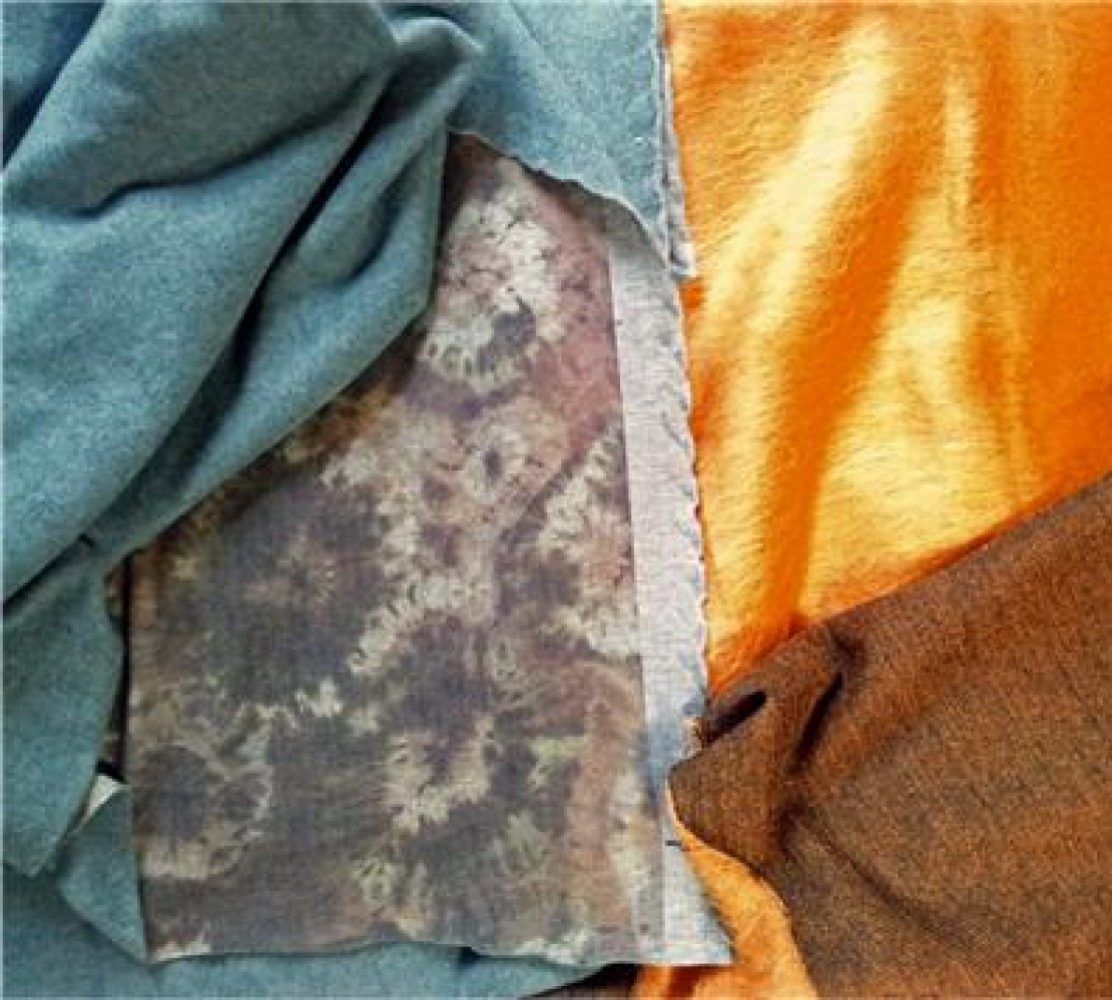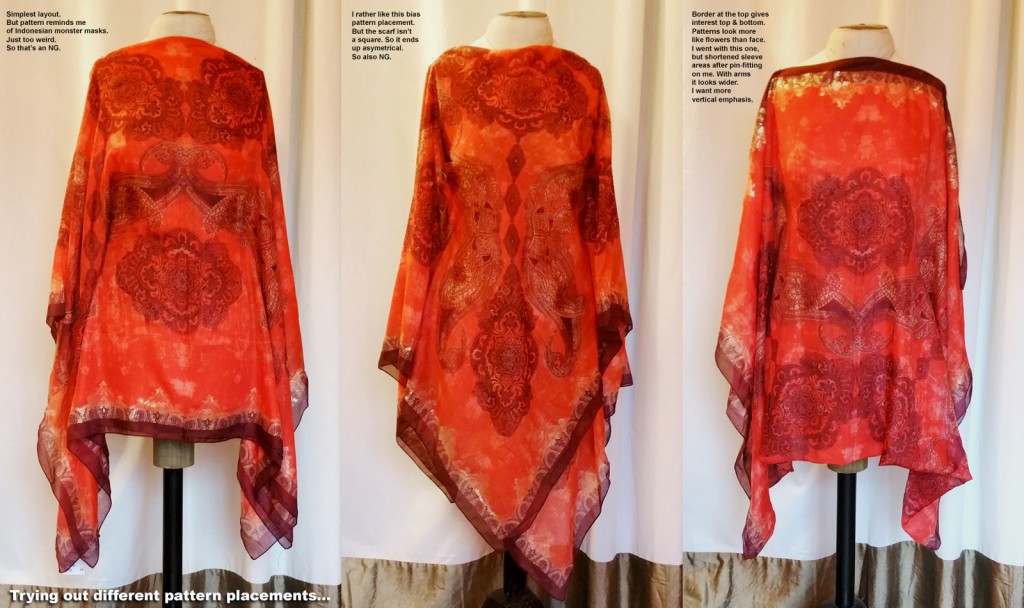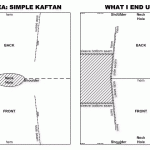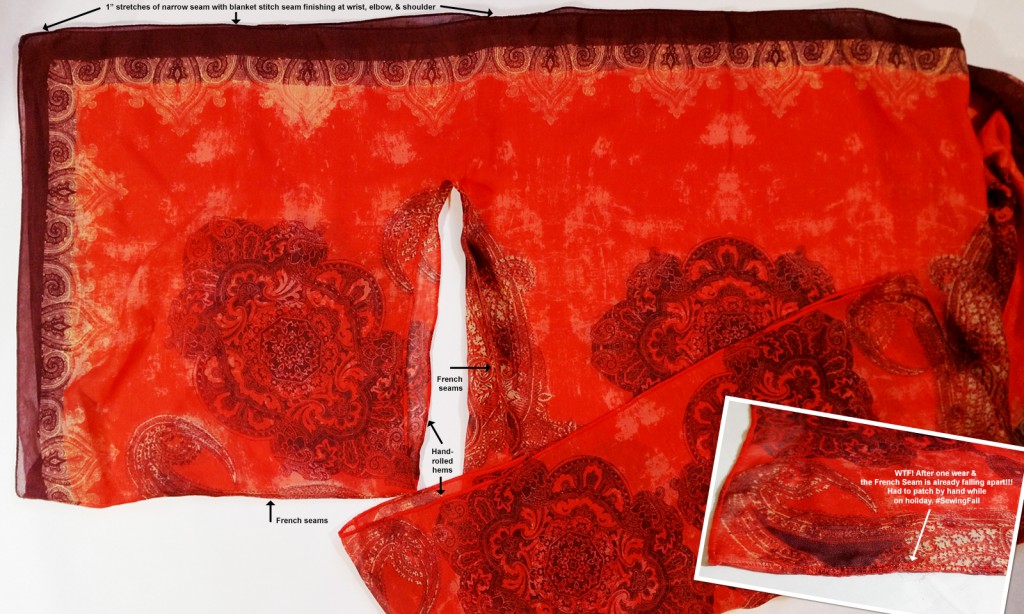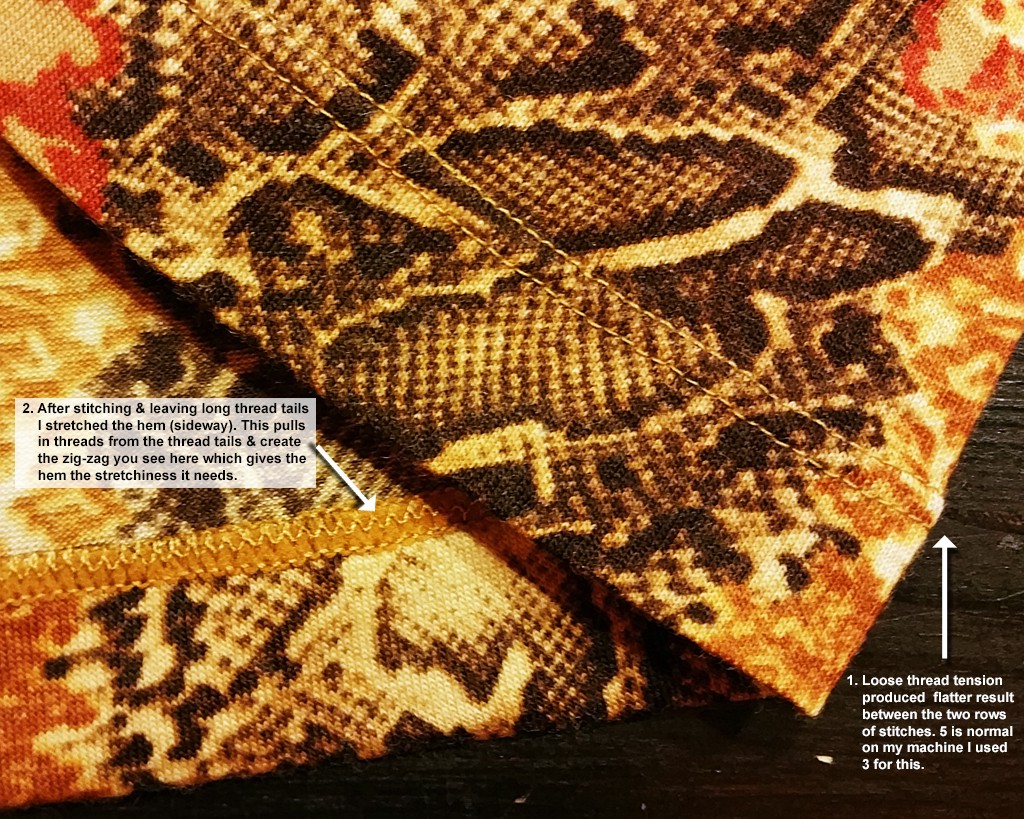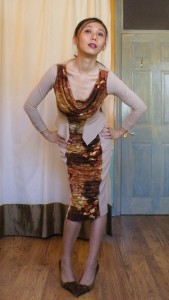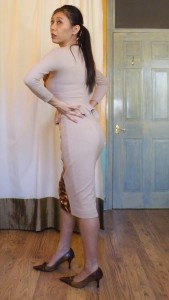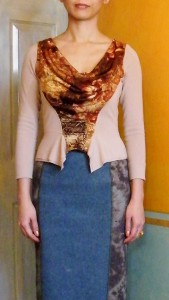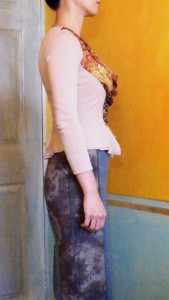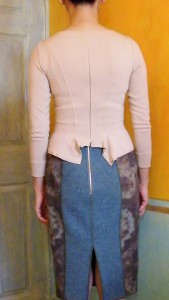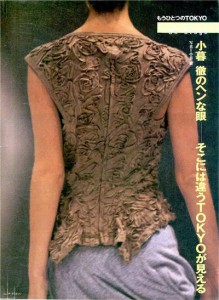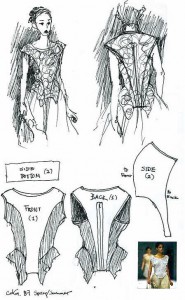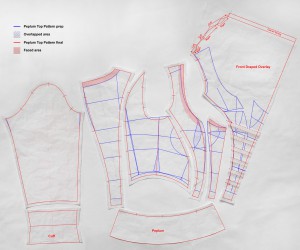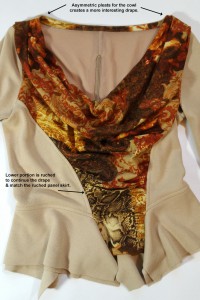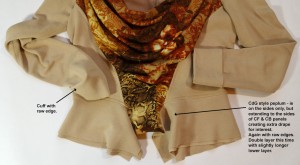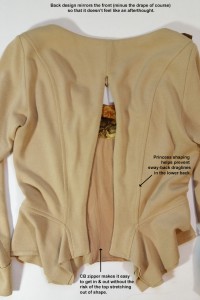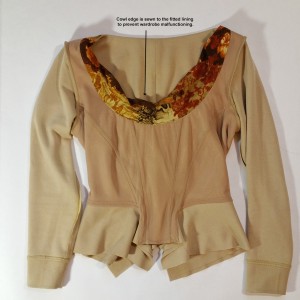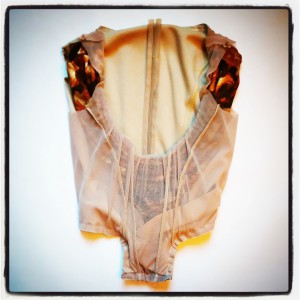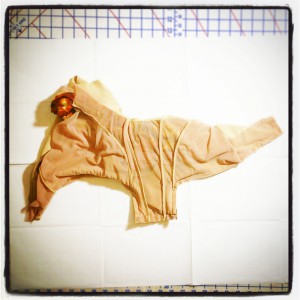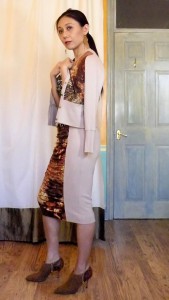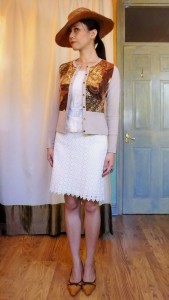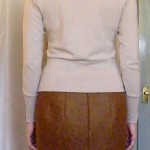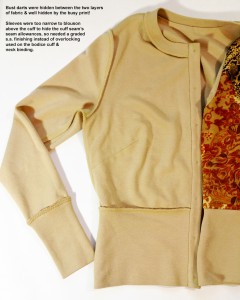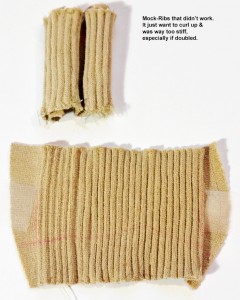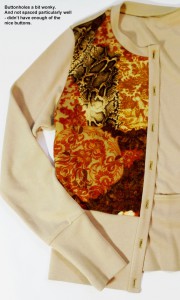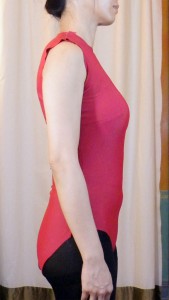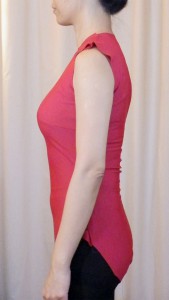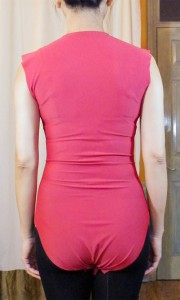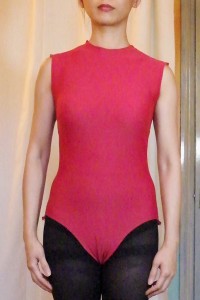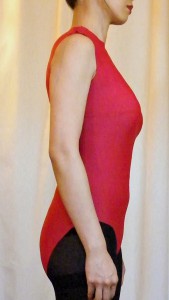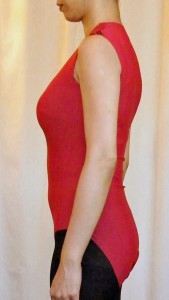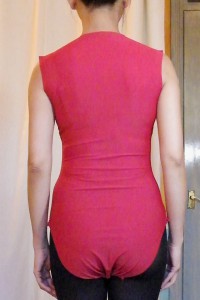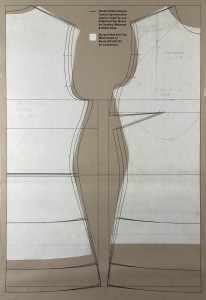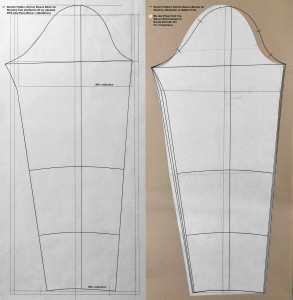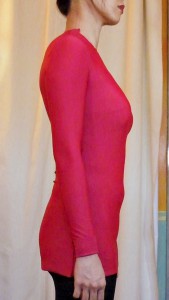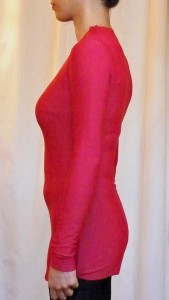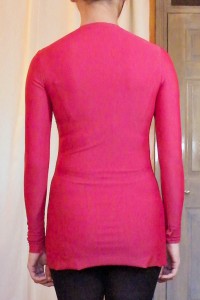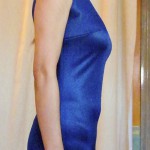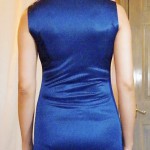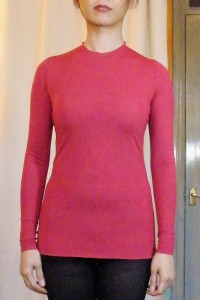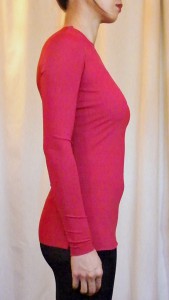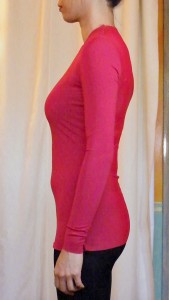Before I show you the next snake I need to show you the Block it’s based on. This is like my Nth experiment to come up with a dependable Knit Top Block. I’ve tried:
The problem is that I didn’t really know what I was doing. And with so much variation in stretch fabrics, one minute I think I got it the next I get a wadder when I try to design from it. So my quest continues. And (Stretch) Pattern School website impresses with the theory, the background info, and the clear drafting instructions. So I thought it’s worth a try.
2020-07-20 update: GREAT NEWS! Mr Anderson is back from retirement with his (Stretch) Pattern School 2.0! I haven’t explored it in details yet, but he says the info has been updated to reflect latest developments in swim / dancewear technology. Unfortunately the free auto-generated custom block feature is gone because the company that host the new website doesn’t offer such sophisticated programming options. But there is now a Pattern & Block Shop for RTW designers & interested home-sewers. Presumably this will be standardised sizing rather than custom based on your measurements, but certainly better than nothing! There’s also a Pattern School Online Facebook group & he’s also on Instagram (pattern.school.online) if you want to get latest updates from him. Have fun!
2017-05-19 update: The Pattern School website is no longer available online, but Mr Anderson is still extremely protective of his copyrights. So to avoid lawsuits absolutely no sharing of his content if you saved pages for your own personal reference. Hopefully my report below on my experiment using his method does not constitute an infringement of his copyrights.
If you’re looking to draft your own stretch block you will have to look elsewhere for instruction. This method is no longer an option.
Since part of the fun of writing sewing blog is the sharing of experience, I’m going to look into replacing this set of blocks with one drafted from instructions that are still publicly available. Then hopefully when I design from my stretch blocks then you too can learn to create & design with your own stretch blocks. I’m thinking maybe Pattern Cutting for Lingerie, Beachwear and Leisurewear by Ann Haggar…or go back to Designing and Patternmaking For Stretch Fabrics since I’m not really looking for swimwear blocks. I may also experiment with adapting my 0-ease woven blocks – either my Kenneth King moulage or my body wraps.
If you’re looking to enter the swimwear design field & can expense professional books & subscriptions, maybe try Intimate Apparel Journal (ia-technical.com) website. They have articles on “Introduction to Swimwear Pattern Cutting Principles” & “Grading Swimwear” available at $19.90 each. Or you can buy a subscription which costs $299/yr for verified students or $399/yr for professionals (4 issues/yr). Their shop also offers past issues of the IA Journal, special-topic compilations, or individual articles for purchase. The site is run by a Hong Kong professor with experience in the intimate apparel industry. But the above articles are written by David Morris, a British technical designer who worked for well-known intimate apparels brands & also taught at university level in the UK. David also runs Intimate Apparel Technical website (iatechnical.com) which offers a remote learning course on Swimwear Pattern Cutting & Grading for £250.)
Both are above my pay grade since I’m only sewing for myself, so I can’t comment on whether either professional sources are worthwhile. But I may just pay for an article or two from the Hong Kong site to learn the basic principles again from a publicly available source.
Anyway, back to the experiment. For not all theories works for everyone all the time. Theories need to be tested, especially when it comes to anything to do with infinitely variable human beings!
The Theory
For this experiment I tried Stretch Pattern School’s pattern drafting instruction for…
- One-Piece Swimwear Block for Stretchy Knit (75%+ stretch, 12% horizontal/0% vertical negative ease)
- Tankini Top Pattern based on 1 + variation for Stable Knit (0%/0% negative ease)
- Set-In Sleeve Block for Stretchy Knit
supplemented by
The Findings
One-Piece Swimwear Block (12%/0% negative ease)
The first muslin came out quite well. But there were a few small issues…
- My Front side seam came out longer than the corresponding Back side seam, even with the dart.
- There are some sway-back type draglines in the back.
- I got some draglines underarm and gapping in the armholes.
- The front neck chokes a bit.
- The crotch is a mess. My front gusset length came out longer than the Back.
 Having worked out what my key figure quirks through fitting wovens, I applied the advice from the Tweaking for Larger Sizes page for Front/Back Waist Issues and The Bigger Bust. Shifting the side seam towards the back at the waist solved #1 and mitigated #2.
Having worked out what my key figure quirks through fitting wovens, I applied the advice from the Tweaking for Larger Sizes page for Front/Back Waist Issues and The Bigger Bust. Shifting the side seam towards the back at the waist solved #1 and mitigated #2.
Adjusting for sloping shoulder helped with #3. And forward head adjustment (raising back neckline & lowering front neckline) helped with #4.
#5 I haven’t solved yet. Not having sewn such garment before I don’t know if one has to insert the leg elastics first before one can check the crotch fit. It might also be possible that I have the “in thigh” figure quirk mentioned on the Tweaking for Larger Sizes page. Or the fact that I’ve put 4 big snaps in the gusset seam as temporary closure. In any case swimwear / bodysuit isn’t a priority, so I’m leaving this alone for now.
But I think in general wherever the instruction calls for “X cm +/-Y mm per size from size 10” it would be wise to check if the relevant Australian size 10 measurement he used matches yours. Eg going by the AUS size 10 measurement the front gusset length is in fact 0.5cm shorter than the back. I had calculated my back gusset length using the Wais-to-Waist (crotch length) and Waist-to-Crotch (crotch depth) measurements. But the front gusset length wasn’t given as a formula, so it came out longer than my back gusset length! Shortening this to back gusset length minus 0.5cm helped with #2 and #5 a bit.
Tankini Top Patterns + Sleeve Block
If this works it will become my new Fitted Knit Top Block. I’m hoping to have a set for
- Stretchy Knits with 70+% stretch (12% negative ease)
- Moderate Knits with 40-70% stretch (6% negative ease)
- Stable Knits with 10-40% stretch (0% negative ease)
I used my adjusted One-Piece Swimwear Block as the starting point. Since I’m not making a tankini, I only followed steps 4-5, adding ease from bustline downward & shaping the hemline. I extended the hemline down to the One-Piece Block’s hip line, then superimposed my woven Pencil Skirt Block to mark where my high hip and hip levels are. These two are the most likely hemline references for tops I’d want to design from the block.
I drafted patterns for all three types of knit and muslined the Stretchy Knit and Stable Knit version. Both came out OK I think…
Stable: Made with Shimmer Jersey from
Minerva Crafts with 10%H/5%V stretch.
The bust dart on the Stable Knit version seems too high up. But the bustlines are exactly the same level on both version. Maybe the almost non-existent vertical stretch of my worst case scenario ‘Stable Knit’ test fabric is at fault. And to be honest I think I will avoid making fitted stretch tops out of such minimum stretch fabrics and instead use my Moulage with darts / princess seams for shaping and the minimum stretch for wearing ease.
The sleeve I only muslined for the Stretchy Knit. It came out rather long! Also the default instruction doesn’t cater for my twisted arms. I shortened the sleeve & shifted some width at bicep / underarm from front to back and at wrist from back to front. So now it looks asymmetrical like my woven Sleeve Blocks but feels more comfortable.
Going Dartless
 The holy grail of knit block of course is the dartless yet smooth fitted T for the busty gal. Is it possible? Stuart advise against it. So does the book I have on pattern drafting for stretch fabrics. But then in the Tankini instruction he did ofter the option of easing the dart into back side seam…provided that you also include a shelf bra which does have a bust dart.
The holy grail of knit block of course is the dartless yet smooth fitted T for the busty gal. Is it possible? Stuart advise against it. So does the book I have on pattern drafting for stretch fabrics. But then in the Tankini instruction he did ofter the option of easing the dart into back side seam…provided that you also include a shelf bra which does have a bust dart.
Naughty me thought I’d try my luck and see if I can pivot out the dart here like I did for the woven Tunic Block. The result wasn’t pretty…
Maybe it’s the fabric. I might try again with a stretchier and/or heavier weight spandex knit. But for now I will work with the dart and try to incorporated the shaping into the designs rather than risk crow feet around my bust!
